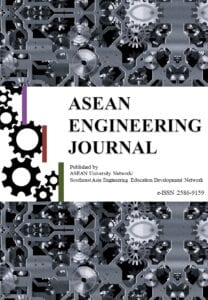ANALYSIS OF POLLUTION LOAD CAPACITY BASED ON WET, NORMAL AND DRY YEAR’S RESERVOIR OPERATING PATTERNS IN THE SAGULING RESERVOIR, INDONESIA
DOI:
https://doi.org/10.11113/aej.v11.16662Keywords:
Pollution load capacity, Reservoir operating pattern, Saguling ReservoirAbstract
Saguling Reservoir is one of the Citarum Cascade reservoirs located in the upstream area at an altitude that is 643 meters above sea level in West Java, Indonesia. The Saguling Reservoir functions as a hydroelectric power plant (PLTA), a water supply provider for irrigation, and flood control. This research aims to determine the capacity of the water pollution loading accordance with reservoir operating patterns that consist of dry, normal and wet years, based on Government Regulation No. 37 of 2010 concerning Dams. The pollution load in the reservoir is limited by the Total-P concentration that is caused by the fishery’s activities in the water body, especially concerning the Floating Net Cage (KJA) systems. The analysis of water quality status and optimization of reservoir management was carried out by Discrete Markov discharge classification which conducted in 1998-2018. A trophic status analysis of the Saguling Reservoir showed that the waters have entered the hypereutrophic criteria. This study also reveals that the Saguling Reservoir has the lowest pollution load capacity in the dry year, with values of 5,212.7 ton P per year, followed by 6,003.7 ton P per year during normal years, and 6,423 ton P per year during wet years. These results indicate that the value of the carrying capacity of the Saguling Reservoir will be smaller during the dry years. Therefore, based on this research, the ideal number of KJA that can be accommodate by Saguling Reservoir during the dry, normal and wet years, respectively, 22,141 units, 25,500 units, and 27,284 units. Meanwhile, the actual current number of KJA is 35,482 units, which has exceeded the reservoir’s carrying capacity, especially in the dry years.
















